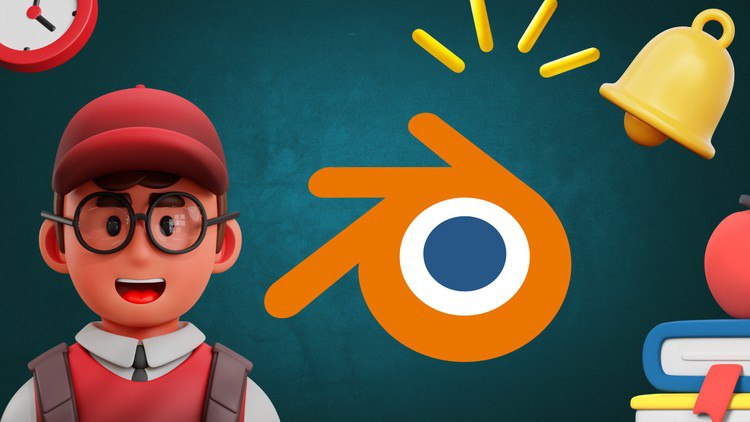Blender Essential: From Beginner to 3D Masterclass
Outline
- Introduction to Blender
- Overview of Blender
- Benefits of learning Blender for 3D creation
- Getting Started with Blender
- Installing Blender
- Navigating the interface
- Core Functionalities of Blender
- Essential tools for modeling
- Sculpting basics
- Texturing essentials
- Rendering fundamentals
- Advanced Modeling Techniques
- Creating intricate characters
- Crafting realistic environments
- Designing detailed props
- Animation Fundamentals
- Principles of animation
- Techniques for fluid animation
- Rigging characters for animation
- Photorealistic Rendering
- Understanding lighting and shading
- Using cycles for high-fidelity renders
- Post-processing techniques
- Professional Compositing
- Integrating 3D models into live-action footage
- Creating digital illustrations
- Using Blender’s compositing tools
- Industry Best Practices
- Optimizing workflow for efficiency
- Adopting professional techniques
- Preparing projects for different applications
- Practical Tips and Tricks
- Speeding up your workflow
- Tips for professional-quality results
- Common pitfalls and how to avoid them
- Case Studies and Examples
- Real-world examples of Blender projects
- Analysis of successful 3D artworks
- Conclusion
- Recap of key points
- Encouragement to continue learning
- FAQs
- Common questions about Blender
- Practical advice and solutions
Blender Essential: From Beginner to 3D Masterclass
Introduction to Blender
Welcome to the Blender Essential: From Beginner to 3D Masterclass! Blender is an incredibly powerful and versatile 3D creation suite that is widely used in the film, animation, gaming, and design industries. Whether you are just starting or looking to refine your skills, this course will guide you through the essential and advanced techniques needed to create stunning 3D art.
Getting Started with Blender
First, you’ll need to install Blender on your computer. Once installed, familiarize yourself with the interface. Blender’s layout is intuitive, but it can be overwhelming at first. Spend some time exploring the different panels and tools to get comfortable with the workspace.
Core Functionalities of Blender
To start creating, you need to understand Blender’s core functionalities. Modeling is the foundation of 3D creation. You’ll learn how to use essential modeling tools to shape and define your objects. Sculpting allows you to add fine details and textures to your models. Texturing is about applying colors, patterns, and textures to give your models a realistic appearance. Finally, rendering is the process of generating the final image or animation from your 3D scene.
Advanced Modeling Techniques
Once you have the basics down, it’s time to dive into advanced modeling techniques. Learn how to create intricate and realistic characters, design detailed environments, and craft props using industry-proven workflows. These skills will allow you to bring your artistic vision to life with precision and detail.
Animation Fundamentals
Animation is what brings your 3D creations to life. You’ll learn the principles of animation, such as timing and spacing, and techniques to create fluid movements. Rigging is an essential part of animation, involving setting up a skeleton for your characters so they can move in a realistic way.
Photorealistic Rendering
Photorealistic rendering is all about creating images that look as real as possible. You’ll learn about lighting, shading, and using Blender’s powerful Cycles rendering engine to produce high-fidelity renders. Post-processing techniques will help you refine your renders to achieve professional-quality results.
Professional Compositing
Compositing is the process of combining multiple visual elements into a single image. You’ll learn how to integrate your 3D models into live-action footage or create stunning digital illustrations. Blender’s compositing tools allow you to seamlessly blend different elements to create cohesive and compelling visuals.
Industry Best Practices
To work efficiently and achieve professional success, you need to adopt industry best practices. This includes optimizing your workflow, following proven techniques used by professional 3D artists, and preparing your projects for different applications, whether it’s for film, games, or digital media.
Practical Tips and Tricks
Boost your productivity with practical tips and tricks. Learn how to speed up your workflow, achieve professional-quality results, and avoid common pitfalls. These insights will help you make the most of Blender’s extensive toolbox.
Case Studies and Examples
Explore real-world examples of successful Blender projects. Analyze these case studies to understand what makes a 3D artwork effective. Learning from examples can inspire you and provide valuable insights for your own projects.
Conclusion
Congratulations! You’ve completed the Blender Essential: From Beginner to 3D Masterclass. By now, you should feel confident in your ability to create high-quality 3D models and animations using Blender. Keep practicing and exploring new techniques to continue improving your skills.
FAQs
Q1: Do I need any prior experience to take this course? No prior experience is required. This course is designed for beginners as well as those looking to refine their skills.
Q2: Can I use Blender for professional projects? Yes, Blender is widely used in the industry for professional projects in film, animation, gaming, and design.
Q3: Is Blender free to use? Yes, Blender is a free and open-source software, making it accessible to everyone.
Q4: What types of projects can I create with Blender? You can create a wide variety of projects, including characters, environments, animations, visual effects, and more.
Q5: How can I improve my Blender skills? Practice regularly, explore tutorials, and study real-world examples to continuously improve your skills and stay updated with the latest techniques.




